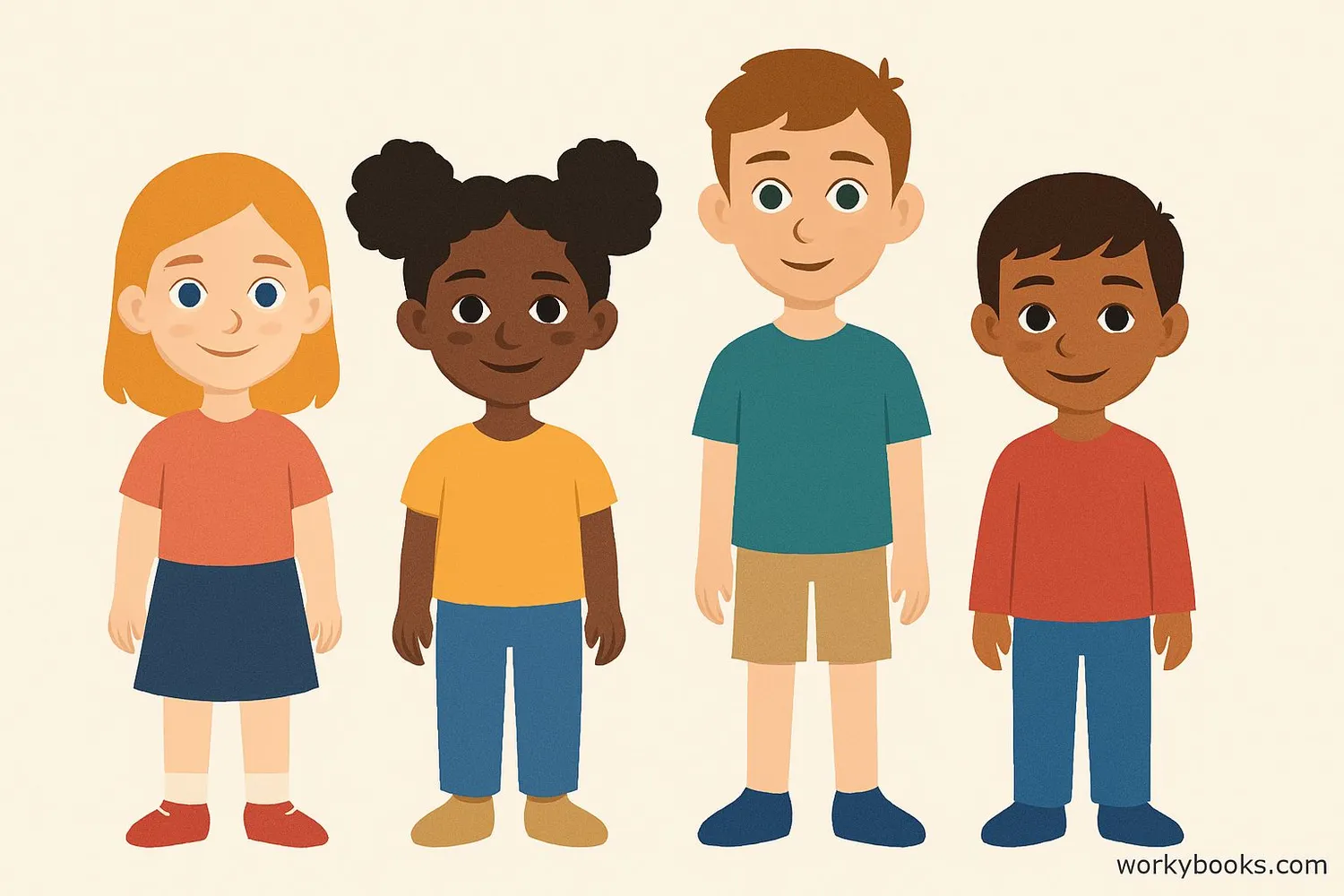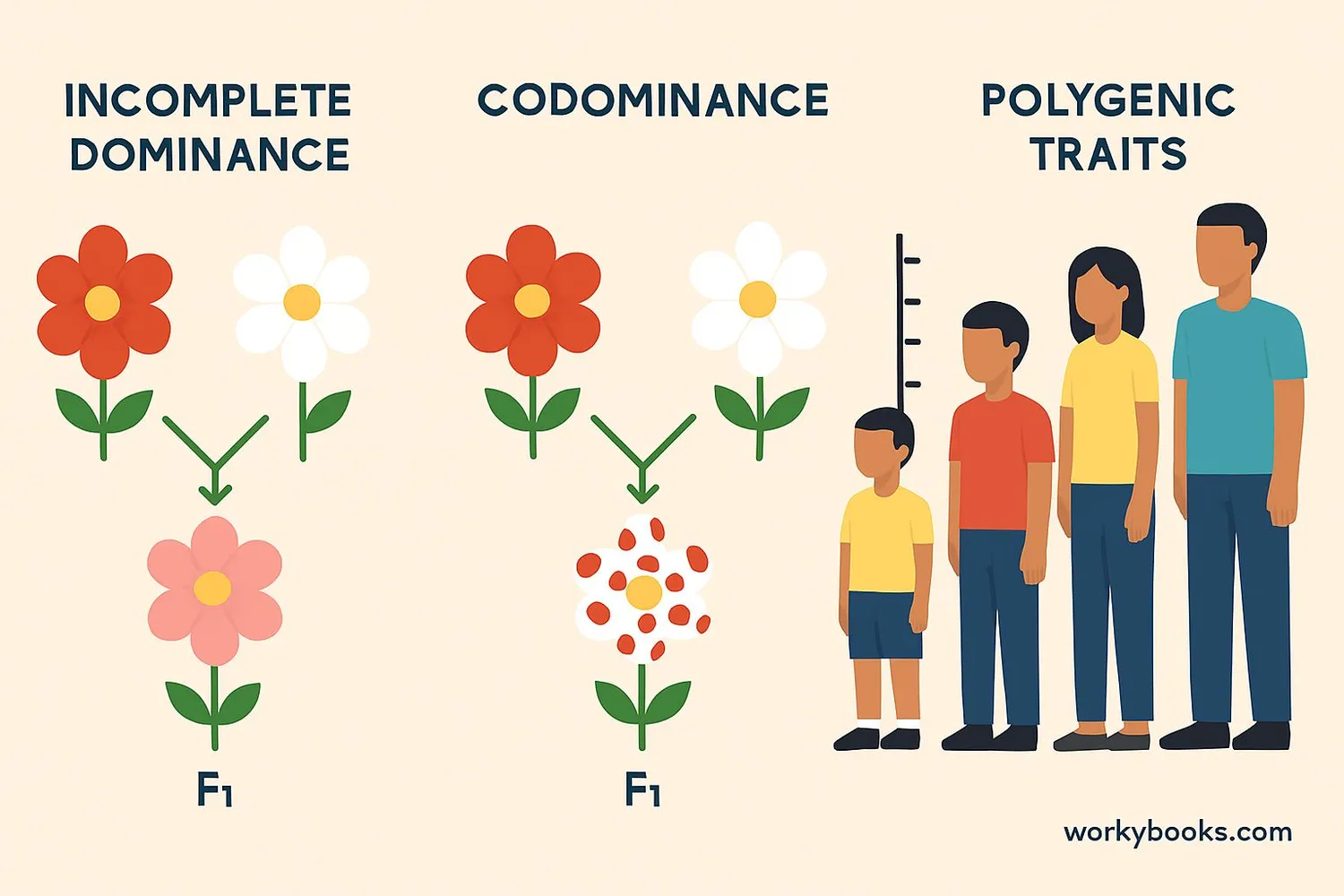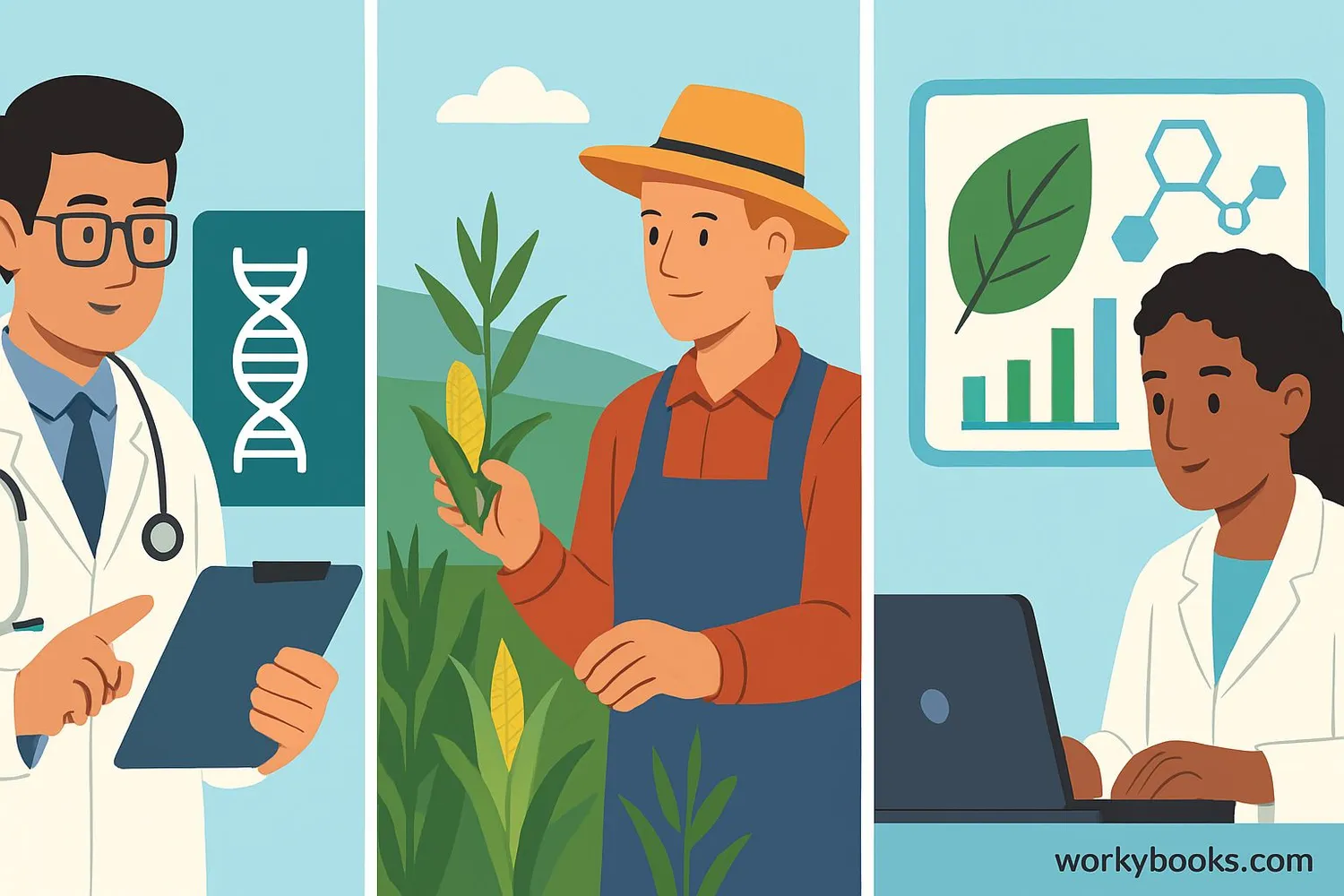Phenotype - Definition, Examples, Quiz, FAQ, Trivia
Discover how your genes create your unique characteristics!
What is Phenotype?

Your phenotype is all the observable characteristics that make you unique! It's what we can see and measure about you. This includes:
• Eye color
• Hair color and texture
• Height
• Skin tone
• Even how your earlobes attach to your head!
Phenotypes are the result of your genes (genotype) interacting with your environment. While your genes provide the instructions, your environment (like nutrition, sunlight, and exercise) can influence how those genes are expressed.
Science Fact!
Identical twins have the same genotype but may develop different phenotypes due to environmental influences!
Genotype vs Phenotype
Eye Color
Height
Health Traits
Understanding the difference between genotype and phenotype is key to genetics:
Genotype is your genetic code - the DNA instructions you inherit from your parents. It's like the recipe for building you.
Phenotype is the actual physical result - what we can observe. It's like the finished cake that came from the recipe.
Example: Your genotype might contain instructions for brown eyes, but your phenotype is actually having brown eyes. The genotype is the potential, the phenotype is the actual expression of that potential.
Did You Know?
Some phenotypes like blood type are determined completely by your genotype, while others like height are influenced by both genes and environment.
How Traits Are Inherited

Traits are passed from parents to offspring through genes. Gregor Mendel discovered the basic patterns of inheritance in the 1800s using pea plants:
Dominant Traits: Only one copy of the gene is needed for the trait to appear in the phenotype. Represented by capital letters (e.g., B for brown eyes).
Recessive Traits: Two copies of the gene are needed for the trait to appear. Represented by lowercase letters (e.g., b for blue eyes).
When organisms reproduce, they pass one copy of each gene to their offspring. This creates different combinations that determine the phenotype.
Homozygous Dominant
Two dominant alleles (BB) - shows dominant phenotype
Heterozygous
One dominant, one recessive (Bb) - shows dominant phenotype
Homozygous Recessive
Two recessive alleles (bb) - shows recessive phenotype
Non-Mendelian Inheritance

Not all traits follow Mendel's simple dominant-recessive pattern. There are more complex ways phenotypes are expressed:
Incomplete Dominance: When neither allele is completely dominant, creating a blended phenotype. Example: Red flower + white flower = pink flower.
Codominance: When both alleles are expressed equally. Example: In some flowers, red allele + white allele = flowers with both red and white spots.
Polygenic Traits: Traits controlled by multiple genes working together. These create continuous variation. Examples: Height, skin color, eye color.
Epistasis: When one gene affects the expression of another gene. Example: In mice, one gene controls pigment color while another determines whether pigment is produced at all.
Why Phenotype Matters

Understanding phenotypes helps us in many important ways:
Medicine
Doctors use phenotypes to diagnose genetic conditions and personalize treatments
Agriculture
Farmers select plants and animals with desirable phenotypes for breeding
Scientific Research
Scientists study phenotypes to understand gene function and evolution
Modern technologies like high-throughput phenotyping (HTP) use drones, sensors, and AI to measure phenotypes quickly and accurately. Projects like the Human Phenotype Ontology (HPO) create standardized descriptions of human phenotypes to help doctors and researchers communicate more effectively.
Phenotype Quiz
Test your genetics knowledge with this fun quiz! Answer all 5 questions to see how much you've learned.
Frequently Asked Questions
Here are answers to some common questions about phenotypes:
Fun Phenotype Trivia
Discover some amazing facts about phenotypes and genetics!
Identical Differences
Identical twins have the same genotype but can develop different phenotypes. For example, one twin might be right-handed while the other is left-handed!
Color-Changing Creatures
Arctic foxes and hares change their fur color phenotype with the seasons - white in winter for camouflage in snow, brown in summer to blend with rocks and plants!
Rainbow Plants
Some plants like hydrangeas can change their flower color phenotype based on soil acidity! Acidic soil makes blue flowers, alkaline soil makes pink flowers.
Unique You
Except for identical twins, every human has a unique combination of phenotypes. Even with billions of people, your exact combination of traits has never existed before!


